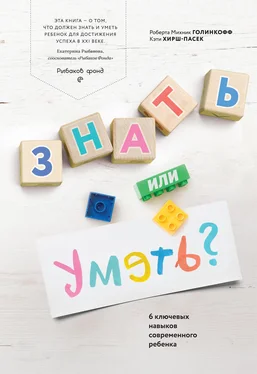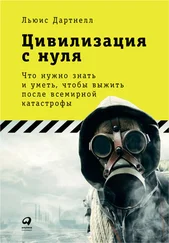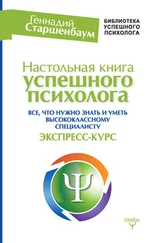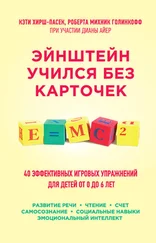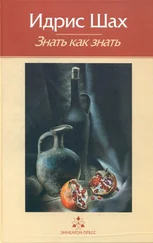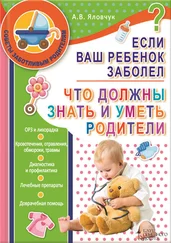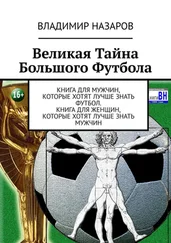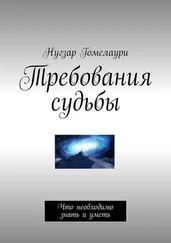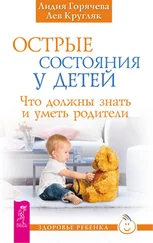Halpern, D., & Riggio, H. (2003). Thinking critically about critical thinking (4th ed.). Mahwah, NJ: Erlbaum, с. 211.
Runco, M.A. (2007). Creativity. New York, NY: Academic Press, с. 40.
Outside the box — мыслить нестандартно, вне шаблонов (вне рамок, стереотипов); буквально — выйти за границы квадрата (амер. англ.).
Chiem, D., & Caswell, B. (2008). The 3-mind revolution. New York, NY: Marshall Cavendish.
Перевод Д. Горяниной, Ю. Полещук, А. Цырульниковой, А. Чередниченко.
Think different. (n.d.). In Wikipedia. См. здесь: en.wikipedia.org/wiki/Think_different.
Russ, S.W. (2014). Pretend play in childhood: Foundation of adult creativity. Washington, DC: American Psychological Association. dx.doi.org/10.1037/14282–000, с. 25.
Kaufman, J.C., & Beghetto, R.A. (2009). Beyond big and little: The four C model of creativity. Review of General Psychology, 13, 1–12. dx.doi.org/10.1037/a0013688, с. 3.
Hoicka, E., & Butcher, J. (2015). Parents produce explicit cues that help toddlers distinguish joking and pretending. Cognitive Science. Advance online publication. dx.doi.org/10.1111/cogs.12264.
Leonardi, P.M. (декабрь 2011). Early prototypes can hurt a team’s creativity. Harvard Business Review. См. здесь: hbr.org/2011/12/early-prototypes-can-hurt-a-teams-creativity/ar/1.
Weisberg, R.W. (1993). Creativity: Beyond the myth of genius. New York, NY: WH Freeman.
Gardner, H. (2006). Five minds for the future. Boston, MA: Harvard Business School Press, с. 89.
Scratch (Скретч) — букв. «царапина» (в амер. англ. есть выражение to start from scratch — «начать с самого начала, с основ»). Заниматься с этой программой можно с пяти-шести лет, если ребенок имеет представление о том, как работать с мышью, запускать программы с рабочего стола, завершать работу с системой, в идеале — немного читать. Секрет в том, что в Scratch нет слов. Программы в ней не пишут, а собирают из готовых блоков — команд, похожих на блоки LEGO. В любой момент можно вносить изменения. Это инструмент для создания мультфильмов, игр, рекламных роликов, музыки, «живых» рисунков, интерактивных историй и презентаций, компьютерных моделей и т. д.
Bonawitz, E., Shafto, P., Gweon, H., Goodman, N. D., Spelke, E., & Schulz, L. (2011). The double-edged sword of pedagogy: Instruction limits spontaneous exploration and discovery. Cognition, 120, 322–330. dx.doi.org/10.1016/j.cognition.2010.10.001.
Lucas, C.G., Bridgers, S., Griffiths, T.L., & Gopnik, A. (2014). When children are better (or at least more open-minded) learners than adults: Developmental differences in learning the forms of causal relationships. Cognition, 131, 284–299. dx.doi.org/10.1016/j.cognition.2013.12.010.
Фичи — от слова feature («свойство, отличительная черта»).
Kaufman, J.C., & Beghetto, R.A. (2009). Beyond big and little: The four C model of creativity. Review of General Psychology, 13, 1–12. dx.doi.org/10.1037/a0013688, с. 2.
Goffin, S.G., & Tull, C.Q. (1985). Problem solving: Encouraging active learning. Young Children, 40, 28–32.
Wallis, C., & Steptoe, S. (10 декабря 2006). How to bring our schools out of the 20th century. Time. См. здесь: content.time.com/time/magazine/article/0,9171,1568480,00.html, абзац 1.
Preus, B. (2007). Educational trends in China and the United States: Proverbial pendulum or potential for balance? Phi Delta Kappa, 89, 115–118, с. 116.
Zhao, Y. (2009). Catching up or leading the way: American education in the age of globalization. Alexandria, VA: ASCD.
Weisberg, R.W. (2006). Expertise and reason in creative thinking: Evidence from case studies and the laboratory. In J.C. Kaufman & J. Baer (Eds.), Creativity and reason in cognitive development (сс. 7–42). West Nyack, NY: Cambridge University Press. dx.doi.org/10.1017/CBO9780511606915.003.
Эта аналогия навеяна следующей работой: Kaufman, J.C., & Beghetto, R.A. (2009). Beyond big and little: The four C model of creativity. Review of General Psychology, 13, 1–12. dx.doi.org/10.1037/a0013688.
Джеймс Бирд (1903–1985) — кулинар, учитель, обозреватель и телеведущий. Чемпион американской кухни, который воспитал не одно поколение профессиональных поваров. Издал 20 книг, немало статей. Его фондом учреждена именная ежегодная премия в разных кулинарных жанрах.
Мари-Антуан Карем (Антонин Карем) (1784–1833) — известный повар, один из первых представителей так называемой высокой кухни.
Kaufman, J.C., & Beghetto, R.A. (2009). Beyond big and little: The four C model of creativity. Review of General Psychology, 13, 1–12. dx.doi.org/10.1037/a0013688.
Sternberg, R.J., & Grigorenko, E.L. (2007). Teaching for successful intelligence: To increase student learning and achievement. Newbury Park, CA: Corwin Press.
Sternberg, R.J., & Grigorenko, E.L. (2007). Teaching for successful intelligence: To increase student learning and achievement. Newbury Park, CA: Corwin Press.
Azzam, A.M. (2009). Why creativity now? A conversation with Sir Ken Robinson. Educational Leadership. См. здесь: www.ascd.org/publications/educational-leadership/sept09/vol67/num01/Why-Creativity-Now%C2%A2-A-Conversation-with-Sir-Ken-Robinson.aspx, абзац 14.
Brynjolfsson, E., & McAfee, A. (2012). Race against the machine: How the digital revolution is accelerating innovation, driving productivity, and irreversibly transforming employment and the economy. Lexington, MA: Digital Frontier Press.
Partnership for 21st Century Skills. (2008). 21st century skills, education, and competitiveness: A resource and policy guide. См. здесь: www.p21.org/storage/documents/21st_century_skills_education_and_competitiveness_guide.pdf, с. 6, 10.
Мимеограф (ротатор, автокопист, циклостиль) — машина трафаретной печати, предназначенная для оперативного размножения книг малыми и средними тиражами.
Читать дальше
Конец ознакомительного отрывка
Купить книгу
